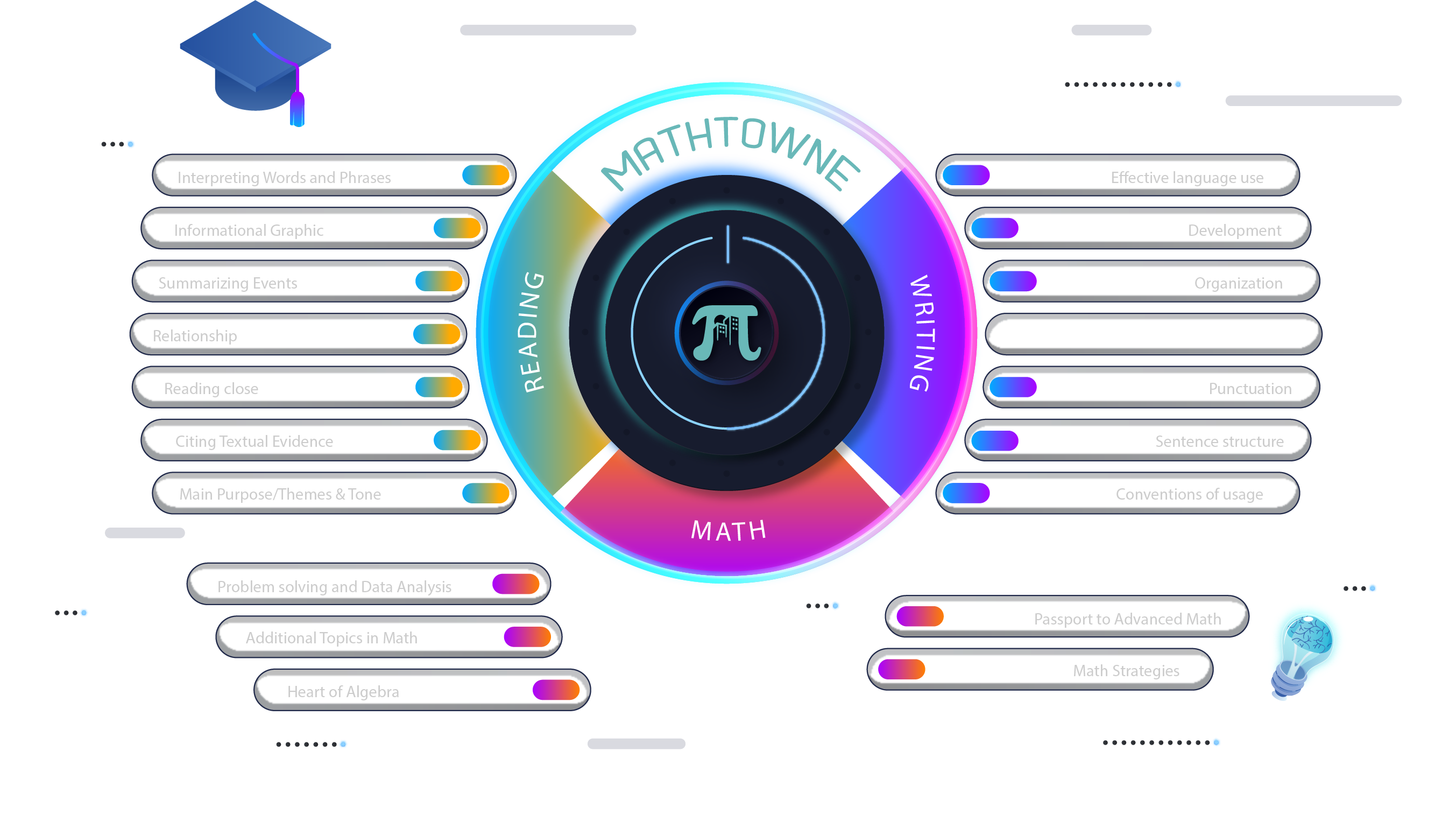Digital SAT Prep in San Jose
We provide the highest-rated tutoring service to middle school and high school students in the San Jose Bay Area.

Digital SAT: The Basics
How do I Take It?
The digital SAT must be taken on College Board’s Bluebook app on a personal laptop, tablet, or school-managed Chromebook. Make sure to download it before testing day to familiarize yourself with the format. The app will walk you through signing into a student account or with a sign-in ticket from your school.
Students who do not own a device can request one to borrow on testing day after registering for the digital SAT.
When Will the SAT Go Digital?
The digital SAT was introduced at international test centers in the spring of 2023 but will not be available to students in the US until the spring of 2024, although the digital PSAT is already available.
Difference Between Digital SAT and Paper SAT

What will stay the same?
Score Range
The range of possible scores will remain between 400 – 1600. The Reading & Writing section will still be reported on a 200 – 800 point scale, and the same for the Math section.
SAT Testing Locations
The test will still be administered at schools and testing centers with a physical proctor present.
SAT Content
This standardized exam still assesses the same skills for college readiness with its questions on math, reading, and writing.
Accommodations
Students may still request seeing and hearing accommodations such as extended time or a screen reader.
A list of other accommodations and tools students can use can be found here.
Difference Between Digital SAT and Paper SAT
What will Be Different?
College Board has made a few changes to the digital version such as the length of the test and the timing.
| Digital SAT | Paper SAT (Current) |
|---|---|
| 2 Hours & 14 Minutes | 3 Hours |
| Section 1: Reading & Writing (64 minutes) Module 1: 27 questions (32 minutes) Module 2: 27 questions (32 minutes) Section 2: Math (70 minutes) Module 1: 22 questions (35 minutes) Module 2: 22 questions (35 minutes) | Section 1 – Reading: 52 questions (65 minutes) Section 2 – Writing: 44 questions (35 minutes) Section 3 – Math, No-Calculator: 20 questions (25 minutes) Section 4 – Math, Calculator: 38 questions (55 minutes) |
| Scores released 2 – 3 days after testing day | Scores released 2 – 4 weeks after testing day |
| Adaptive: Questions change depending on how the student performs | Linear: Questions don’t change |
| Answer types: Select the choice or type-in | Answer Types: Bubble the ovals and grid-in |
The adaptive questions on the digital SAT mean that if a student does well on Module 1, then the more difficult version of Module 2 (for the same section only) will be given. Although each question is harder, students have the opportunity to score more points for a harder question, so it is in their best interest to perform well.
Digital SAT Format
College Board has also made modifications for each of the two sections on the test:
Reading & Writing Section
Each passage only has 1 accompanying question.
More but shorter passages (25-150 words in length) compared to the passages in the paper SAT, which average 400-450 words for the Writing section and 500-750 words for the Reading section.
Drama, poetry, and other excerpts have been included as possible passages in addition to the existing literary topics.
You have 71 seconds on average to spend on each question.
Math Section
The entire math section of the digital SAT will allow the use of a calculator. The Desmos graphing calculator will be built into the Bluebook app but students may bring an approved calculator.
Word problems will be shorter and involve less reading.
Grid-in problems only require you to type your calculated answer – there will be no ovals to bubble in.
You have 95 seconds on average to spend on each question.
Is the Digital SAT Easier?
Test Experience
Yes, generally students who have taken the digital SAT find questions to be easier because it’s a shorter test with more time given for each question. The Bluebook application also offers features and tools that students can use while taking the test, such as:
– Highlighting and annotating text for note-taking
– Answer eliminator
– “Mark for Review” for students to revisit questions easily
– Reference sheets for quick access to essential formulas or information
Students who are not accustomed to employing these techniques on the paper version are encouraged to do so on the digital SAT.
Scoring Curve
The trade-off for an “easier” test is that students are graded more harshly in order to maintain standardization – some have reported a decrease of 40 points from a single incorrect question.
Read about the digital SAT in our blog post.
What’s my SAT score starting point?
< 1 min

Frequently Asked Questions
Why is the SAT going digital?
The transition to a digital format is intended to align with the changing educational landscape and to offer a more streamlined and accessible testing experience.
What are some pros and cons of the new digital SAT?
Some potential benefits of the digital SAT include faster score reporting, a more interactive and engaging test-taking experience, and the ability to provide certain accommodations more easily for students with disabilities.
However, because it is a relatively new test, students may run into technical difficulties and be unsure of how to proceed. In the event of technical issues, the College Board has measures in place to ensure that students’ responses are saved even if the testing center loses internet connectivity. It’s important for students to stay calm and follow instructions from test proctors in case of such situations.
Are there practice materials available for the digital SAT?
Yes, the College Board provides practice questions on the Bluebook app to help students become familiar with the digital format, although no full-length practice test for the SAT is available yet. They also recommend Khan Academy as a valuable resource.
Can students request accommodations for test-related anxiety or stress?
Students with documented disabilities, including anxiety-related conditions, can request accommodations to help mitigate the impact of their disability on test day. The College Board has a process for approving such accommodations.
